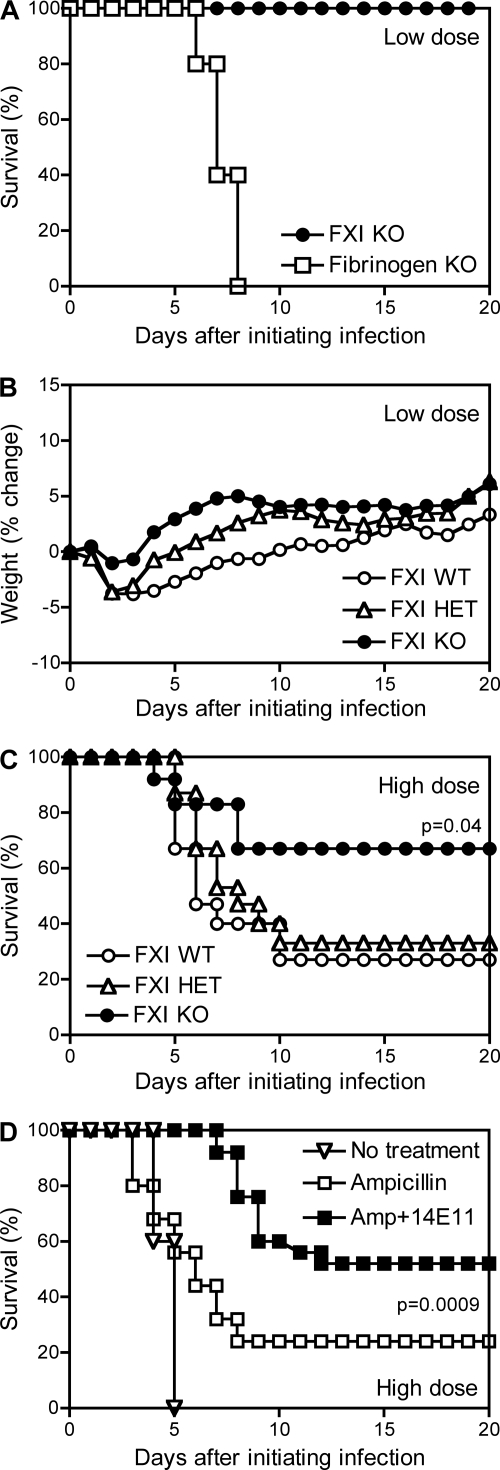Fig 3.
FXI is dispensable for survival after inoculation with low doses of L. monocytogenes and exacerbates mortality after inoculation with high doses of L. monocytogenes. (A and B) FXI wild-type (WT), FXI heterozygous (HET), and FXI-deficient (knockout [KO]) mice as well as fibrinogen-deficient mice were inoculated with a low dose (∼1 × 105 CFU) of L. monocytogenes. (A and B) Survival (A) and percent body weight change (B). All the FXI wild-type, heterozygous, and KO mice survived (n = 9 to 10 per group), whereas all fibrinogen KO mice succumbed (n = 5 per group). The FXI KO mice showed less weight loss, but this trend did not achieve statistical significance at any time point. (C) FXI wild-type, heterozygous, and KO mice were inoculated with a high dose (∼2.5 × 106 CFU) of L. monocytogenes. The wild-type mice demonstrated significantly improved survival (P = 0.04; n = 12 to 15 mice per group). (D) Wild-type C57BL/6 mice were inoculated with a high dose(∼2.5 × 106 CFU) of L. monocytogenes. On day 2 after inoculation, some mice received ampicillin, and others received ampicillin along with FXI-specific MAb 14E11 (Amp + 14E11). The mice that received 14E11 demonstrated significantly improved survival in comparison with those that received only ampicillin (P = 0.0009; n = 25 mice per group). Notably, the wild-type littermate mice from the FXI colony were less susceptible to L. monocytogenes than the Trudeau Institute's colony of wild-type C57BL/6 mice, as evidenced by a 1-day lag in time to morbidity (not shown) and reduced mortality (compare panels C and D).

